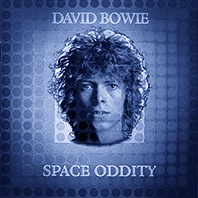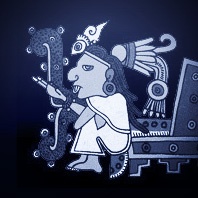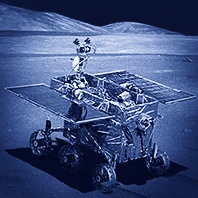Sir Charles Spencer Chaplin (1889–1977) is considered one of the first movie stars ever and made film history with his acting and his works. He is also one of the few artists who managed the transition from silent films to sound films.
Because of using archetypal imagery and symbols in his films, it is natural that the moon could also play a part somewhere. We found four references:
Read more
The song »Space Oddity« by the British musician David Bowie (1947–2016) made history. Bowie’s inspiration for this piece composed in 1968, was the science fiction classic »2001: A Space Odyssey« by Stanley Kubrick.
It tells the fictional story of the astronaut Major Tom, who leaves his spacecraft during a flight through space and says his farewell to the people. The last four lines of the lyrics also mention the Moon:
Read more
As is generally known, the moonlight is actually sunlight reflecting from the surface of the Moon and reaching us here on Earth. You ask yourself the question, whether the moonlight may have a different colour than the sunlight, especially since a nightly scenery usually appears to be bluish. Also movie scenes, are portrayed in blue and so are many pictures and photographs. We would like to forestall the answer: the moonlight is nearly white. The night appears blue due to other reasons.
Read more
As already mentioned in our article about sleepwalking, a connection was made in the past between the moonlight and people, if their conduct was odd, crazy or threatening. One assumed that the moonlight caused this behaviour and spoke of »lunatic«, which derives from the Latin »lunatus« and means more or less »influenced by the moon«. In English, this terminology »lunatic« has been used for many forms of mental illnesses over many centuries. Because many of these disorders could not be explained for a long time (and there are still plenty of questions today), one was in need of a point of reference, a word that would accompany on the path of darkness. The Moon was very convenient.
Read more
Fitting into the Christmas period, we are hanging up a virtual mistletoe and calling upon all lovers out there to kiss each other! The custom has a long tradition in many countries. The symbolism of fertility and vitality play as much a part as the search for the possibility of making the kiss in public socially acceptable. The mistletoe helps to overcome the inhibition, which can stand especially between two people before their first kiss. And incidentally, for every kiss one berry of the bush is plucked – until no berries are left.
Read more
That people connect and come together in the full moon light is not new and has always been this way. But what regularly occurred during the second half of the 18th century in Birmingham, Great Britain around full moon time, was an encounter of a special kind. The countries most brilliant and influential minds met back then (natural scientists, physicians, poets, theologians, philosophers, inventors and industrialists), within the scope of the, by Erasmus Darwin initiated »Lunar Society« in 1765.
Read more
The Aztec were indigenous people (natives), who lived in Central America between the 14th and 16th century, in the area of today’s Mexico. Just like all primordial nations, they had a variety of deities and Tecciztecatl is the god of the moon. Many stories about the Aztec have been passed on, most of them appear sinister and cruel. Also their ending, precipitated by the Spanish conquerors, was bloody and does not belong to the chapters man can boast about. And so, you look to the past with split feelings.
Read more
On Wednesday, 15th June 2011 (or Thursday 16th June for certain time zones) is full moon and a total lunar eclipse at the same time. However, it will only be completely visible in the Near and Middle East. In Asia and Australia, the moon will be already set and in Europe and Africa, the moon will be just rising by the time the lunar eclipse takes place. In America, this event won’t be visible at all.
Read more
Suitable for today’s 4th July, »Independence Day« in the US, and moreover it being the new moon, we pose the question of the dependency or independency of the Moon. Are we dependent on the Moon or not? And is the Moon dependent on us?
If we believe the surveys, more than 40% of people feel influenced by the Moon, in particular during sleep. In other ways as well and the influence of the Earth’s moon is being discussed in many areas, although there is still no evidence. Science rather confirms the opposite and verifies this by referring to various studies that the human is independent of the Moon; however, this does not correspond with the basic feelings of most.
Read more
In the Ancient Roman Empire, lunula amulets were often worn as a lucky charm, but also as protection against evil forces and demons. Special crescent-shaped jewelry pieces were made for girls, to grant them the protection of the goddess Diana. Diana is the goddess of the Moon and also of hunting in Roman mythology. Artemis is the equivalent among the Greek Gods.
Read more
After USA and the Soviet Union, China will be the third nation in the world travelling to the Moon with their space program, and they will probably land there with the astronauts as well in the long term. At the moment, an unmanned spaceship »Chang’e-3« (moon fairy) is on its way to the Moon since 1st December 2013, planning to land in the Mare Ibrium on 14th December and supposed to transport a rover for research purposes of the Moon’s surface. The vehicle is called »Yutu« (jade rabbit).
Read more










